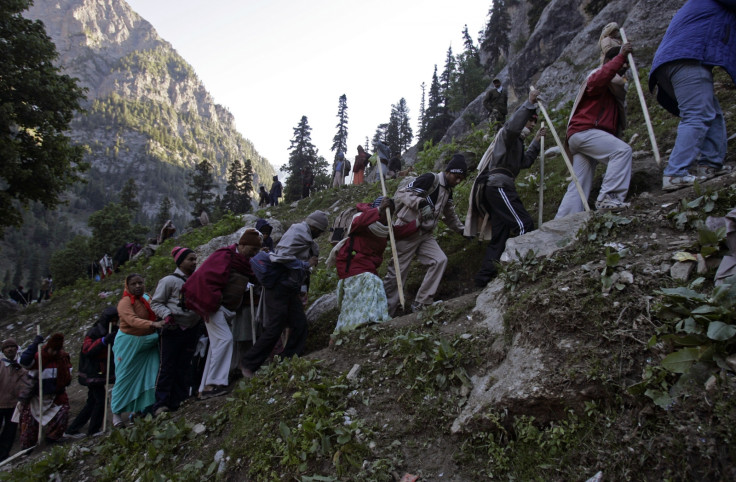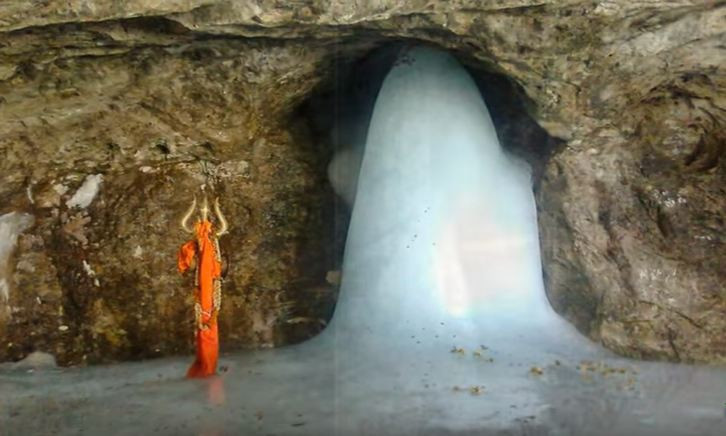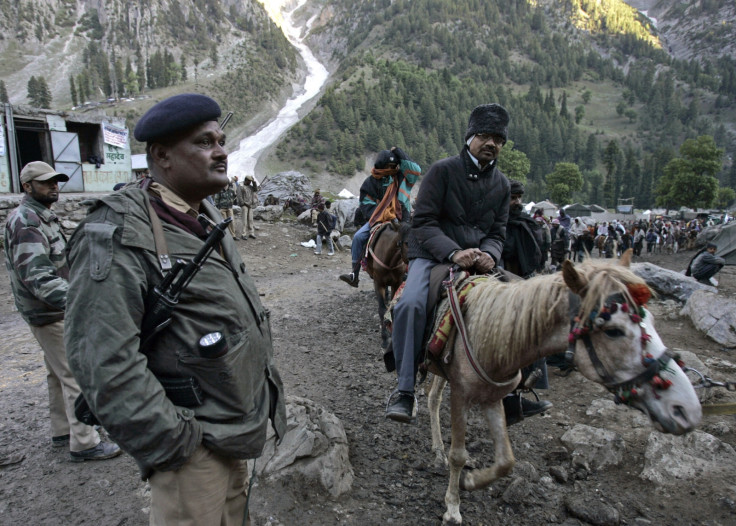Amarnath Yatra: A trek of faith that runs along dangers and terror threats
More than 50 pilgrims to Amarnath, in India's Jammu and Kashmir, have lost their lives in the past 18 years to terror attacks.

The famous shrine of Lord Shiva — a highly regarded Hindu deity — located high up in the mountains in the northern Indian state of Jammu and Kashmir is an important place of pilgrimage for Hindu devotees. The journey to the shrine is dubbed the Amarnath Yatra.
Every year hundreds of thousands of people battle unfavourable weather conditions and the harsh terrain to reach the holy shrine that houses a Shiva Linga (an abstract representation of the deity) made of ice, formed inside a small cave.
The inhabitable mountainous region remains snow covered for most part of the year and is accessible only between June and August, which happens to be the rainy season in the country. The pilgrimage is organised by the state government and the Shree Amarnath Shrine Board.
The route
The Amarnath cave is situated at an altitude of 12,756ft. It is about 141km from Srinagar, the summer capital of Jammu and Kashmir state. People travel from Srinagar or Jammu city to a place called Pahalgam from where the trek begins. It takes approximately five days to reach the Amarnath shrine.
Many devotees travel on foot or on ponies, while there are wooden carriages that can be hired for the elderly, small children or those unable to walk.
There is another shorter northern route that runs for about 16km, but has a very steep gradient making it an arduous climb. This route runs along the Amarnath valley.

The challenges
The Amarnath pilgrims battle death throughout the strenuous and risky trek to the holy cave, but with rising threats from terrorists, the challenges for the pilgrims have multiplied over the past decades.
Seven pilgrims were killed on Monday (10 July) when their bus was caught in a gunfire between militants and security personnel as they were returning from a visit to the shrine. The Indian government accused Pakistan-based militant group Lashkar-e-Taiba of carrying out the attack.
Prime Minister Narendra Modi called it a "cowardly" act and vowed to punish the perpetrators. The US too strongly condemned the attack terming it "reprehensible".
"These were civilians, they were killed as they were exercising their right to worship, and that is in large part what makes this so reprehensible. That is a great concern to us," state department spokeswoman Heather Nauert said.
Government agencies reportedly said that they had received intelligence, warning of a possible strike on the Amarnath Yatra this year.
Lashkar-e-Taiba was also held responsible for an attack on the Amarnath pilgrims in 2000 when 30 people, including devotees and locals, were killed while heading to the holy shrine. It was seen as the deadliest strike on the annual pilgrimage.
The state government and other government agencies had tightened security arrangements for the pilgrims since the 2000 attack.

Pilgrim buses are now escorted by police or army vehicles, and security personnel guard the entire routes keeping an eye out for insurgents.
The fatalities
The risky pilgrimage has claimed hundreds of lives in the past two decades, some succumbing to the harsh weather and terrain, while many were victims of terrorist incidents.
According to data from Indiaspend.org, a non-profit data analysis organistion that keeps a track of militant activities and casualties, there have been five terrorist attacks on Amarnath Yatra in the past 18 years. Some 52 pilgrims have so far lost their lives, including 21 pilgrims who died in the 2000 attack.
In incidents unrelated to terrorism, some 130 Amarnath pilgrims have died as of 2012. Most deaths, approximately 88, were because of the arduous climb, high elevation and adverse weather conditions, while the remaining were road accidents.
The pilgrimage was reportedly banned between 1991 and 1995 due to threats from terrorists, but was resumed in 1996 after some militant groups pledged not to disrupt the annual pilgrimage.
However, that year saw the death of nearly 242 pilgrims who were caught in an unseasonal blizzard in late August.
© Copyright IBTimes 2025. All rights reserved.





















